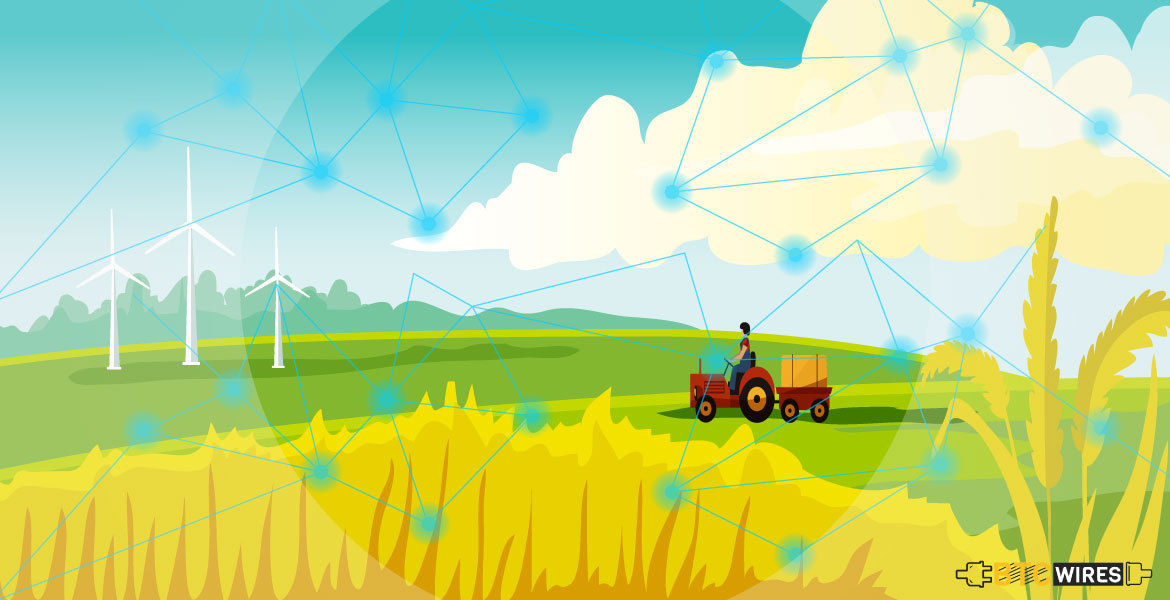Blockchain technology has taken everyone by storm and 10 years

Blockchain technology has taken everyone by storm and 10 years after coming to the forefront through Satoshi Nakamoto’s Bitcoin invention, it is already being pegged as a tool for the next industrial revolution.
Cryptocurrencies which are based on the Distributed ledger technology powered by blockchain are just one of the primary use-cases of the technology.
Agricultural sector around the world is plagued by middlemen and corruption especially in the developing countries where there are no dedicated agricultural policies, because of which the farmers who toll hard to put food on our plate do not even make their end meets.
The blockchain is now being seen as a saviour by many which can lift up the agricultural sector and not only benefit the poor farmers and get them their due, but also make the food we buy safer.
You May Also Read: Blockchain In Energy Sector
Blockchain and Agriculture
Blockchain works on the principle of decentralization and distributed network, and the main aim of the technology is to distribute authoritarian power in the community rather than being concentrated in the hands of few.
There are two possible use cases of the blockchain, one in the developing nations where farmers don’t get their due, and the other in the developed countries where the focus is more on food security.
The use-cases of blockchain in the agricultural sector are being tested in various countries of the world to make sure that the food we get on our table is not laced with harming pesticides and insecticides.
In order to make the food safer, blockchain technology can make use of smart contracts which are self-executing computer codes that execute the contract when the predefined criteria are met. One of the recent examples of IBM using a pilot blockchain project to export mandarin oranges from China to Singapore.
IBM put the export contract on the Blockchain smart contract, where the importer can track the order from the native place until its destination without spending anything on the monitoring process. The project was not just a success but actually delivered a batch of oranges before the delivery date.
How that was made possible, you may ask? That’s the beauty of blockchain, the smart contract had certain predefined criteria like the quality of oranges, the time of shipment and the delivery date. The smart contracts execute in parts, when the oranges would have been loaded on the container, one part of the contract gets fulfilled, and the final part is executed when the oranges reach the inventory in Singapore.
Coming to the payment part, the importer saves the payment in an escrow on smart contract, once the complete shipment is delivered and the importer is happy with the quality and quantity, he can initiate the payment, which will be released from the escrow.
The use of blockchain, not just saved time and but also ensured that the quality of the product is top class. If a few containers would have turned out of lower quality, the smart contract would have deducted the cost based on the pre-set conditions.
You May Also Read: Blockchain In Real Estate
Blockchain and Food Safety
As we observed from the above example, Blockchain use cases of agriculture and food safety do not only save you time and man-hours but also eliminate the chances of middlemen who are the sole reason for all the safety issues.
Using blockchain the buyer and seller have direct contact throughout the deal and both can together decide on the quantity, quality, prices and time taken to deliver the shipment.
Many countries which are facing the problem of contamination and food safety issues are looking for different measures to ensure food safety. Many Australian states have already started projects to test the Blockchain powered food safety programs.
One that grabbed the headlines of many publications was the beef import project based on the blockchain, just like IBM’s oranges on the blockchain, Australian government used the blockchain to ensure the quality of beef being imported are top quality and the importer can track the order live from the point of import to the inventory.
You May Also Read: Blockchain in Education
Conclusion
When Satoshi Nakamoto released his Bitcoin white paper he intended it as a peer-to-peer electronic cashless network in developing countries. The reason being the monopoly of centralized institutions.
Satoshi’s vision for Bitcoin was just the beginning and one of many use cases of the underneath technology, Blockchain. Apart from agriculture and food safety, blockchain can find many different use cases in various sectors which are plagued by middlemen and monopoly of few at the top.
Here Are Few Articles For You To Read Next:

